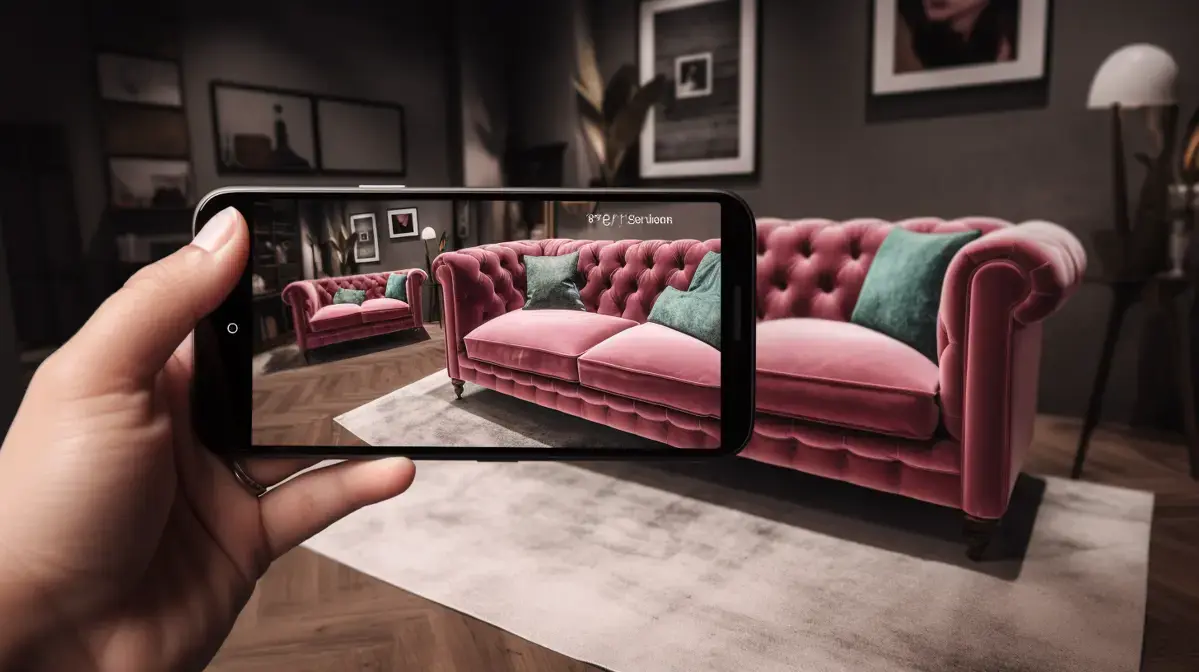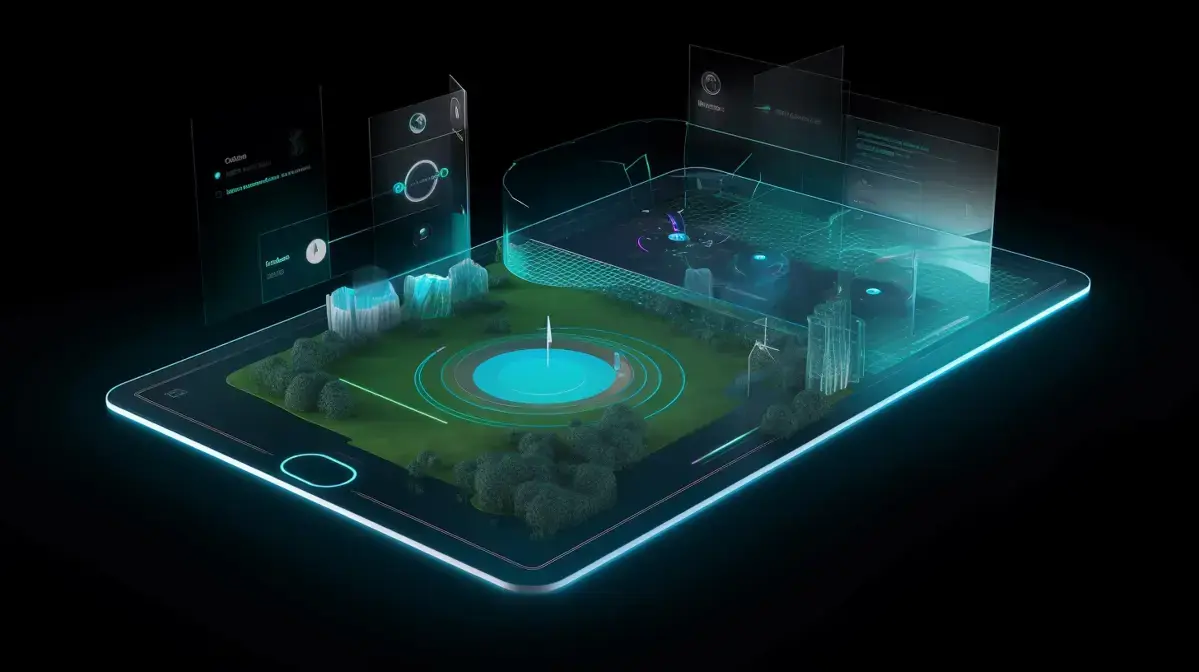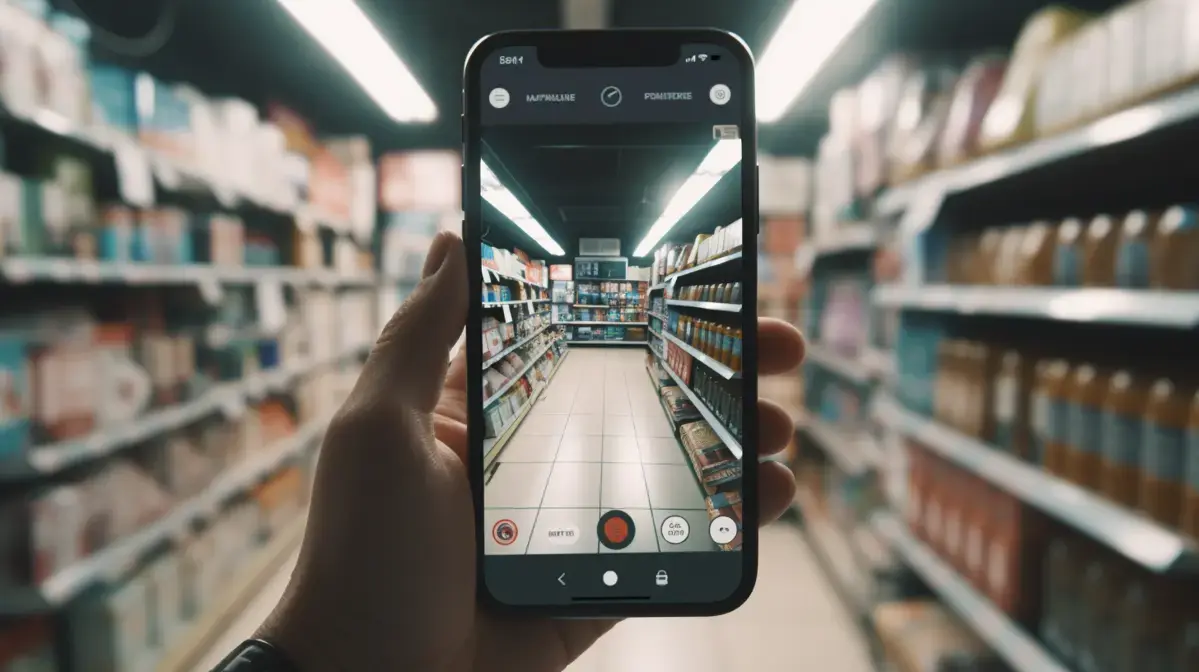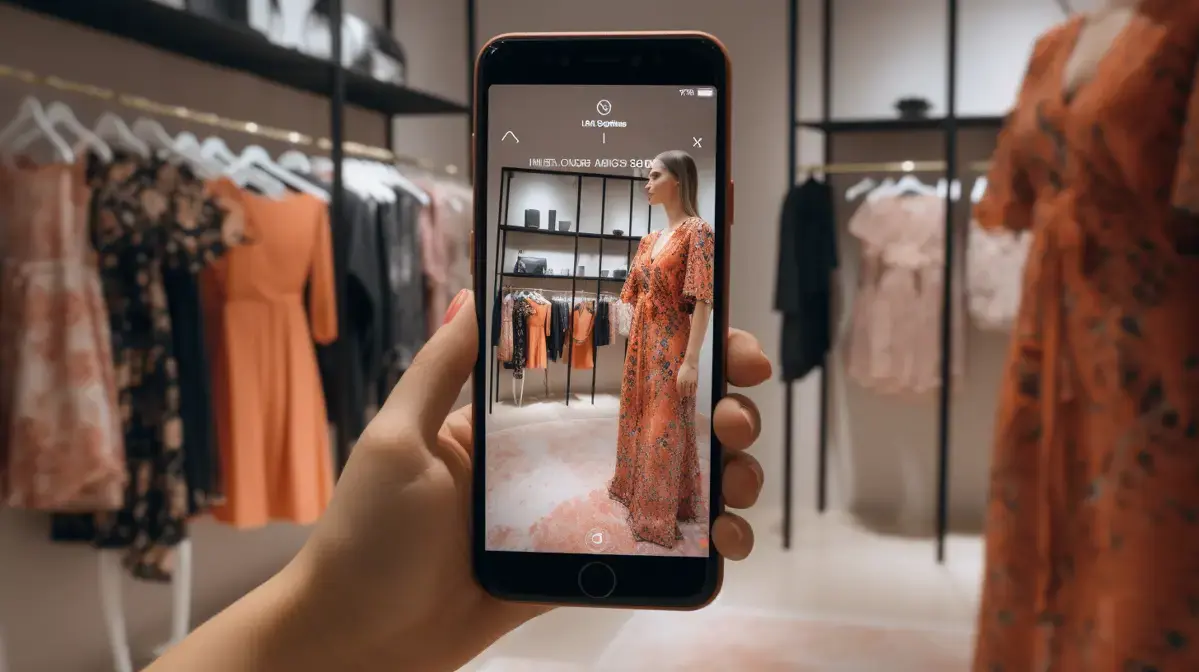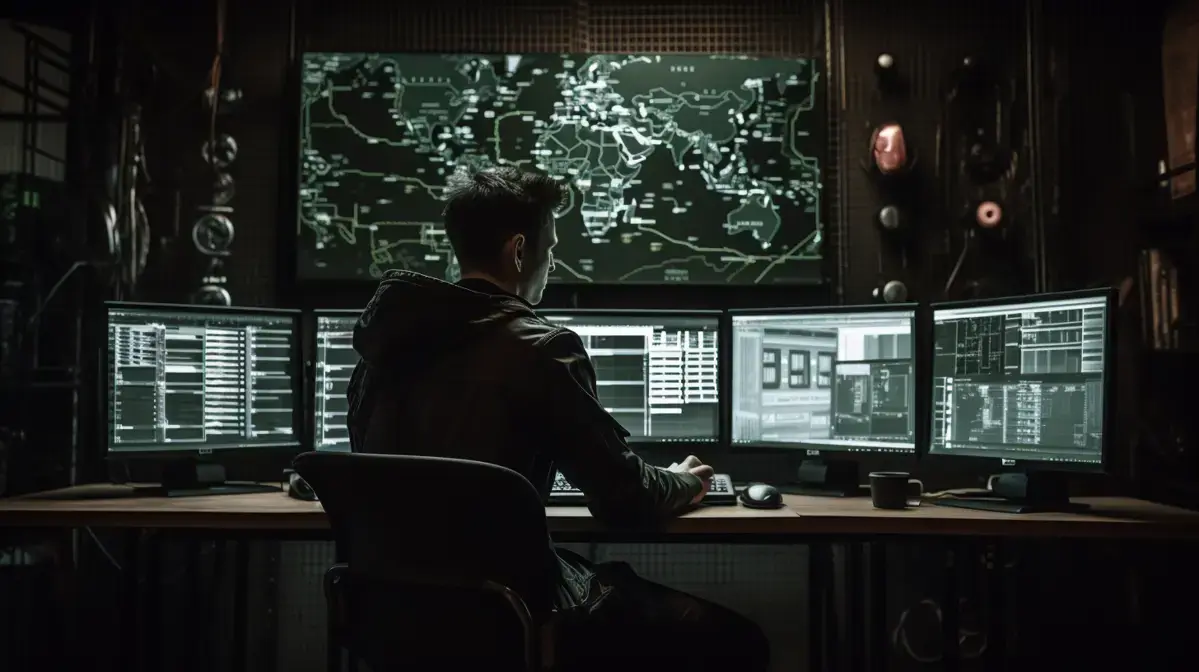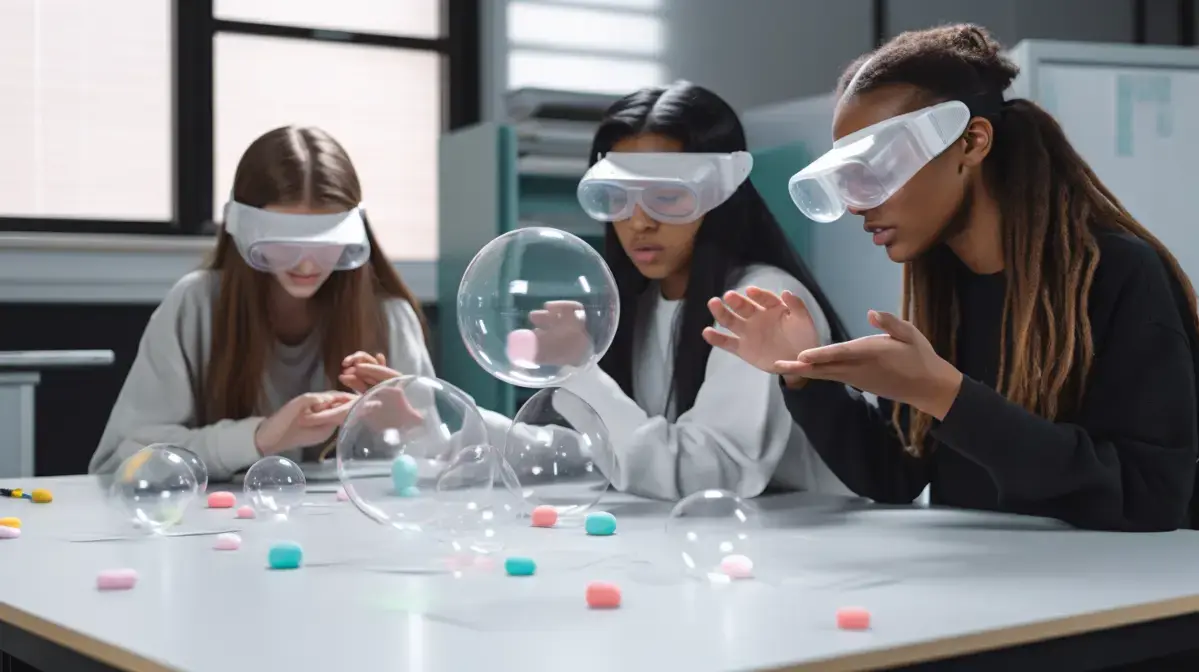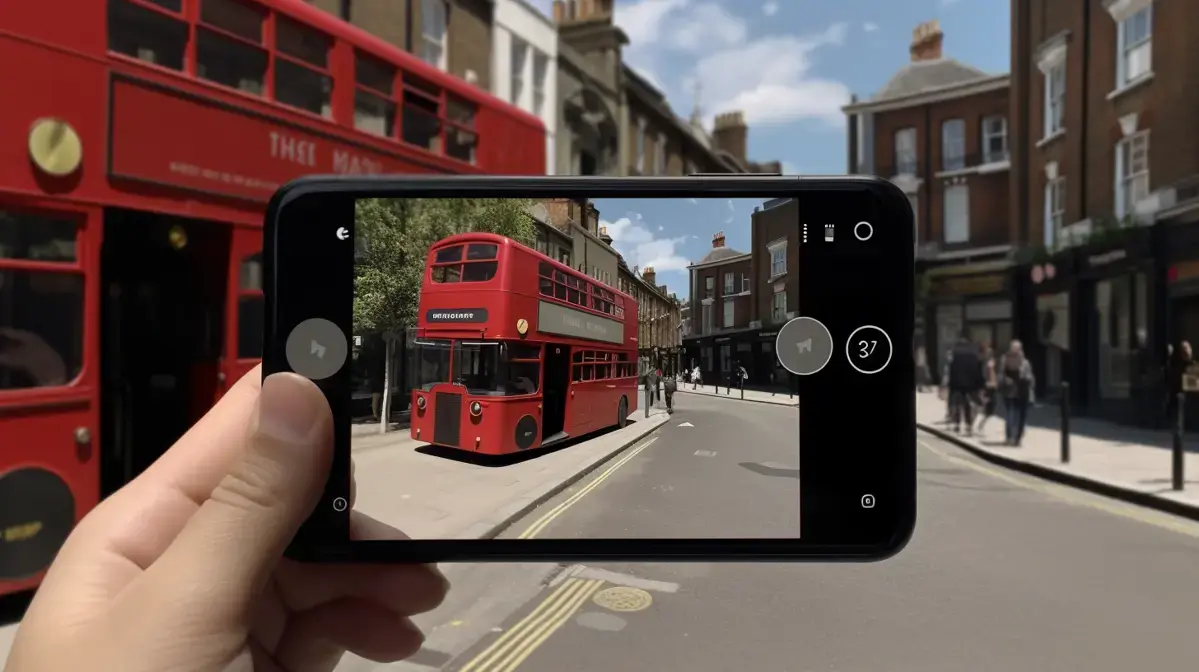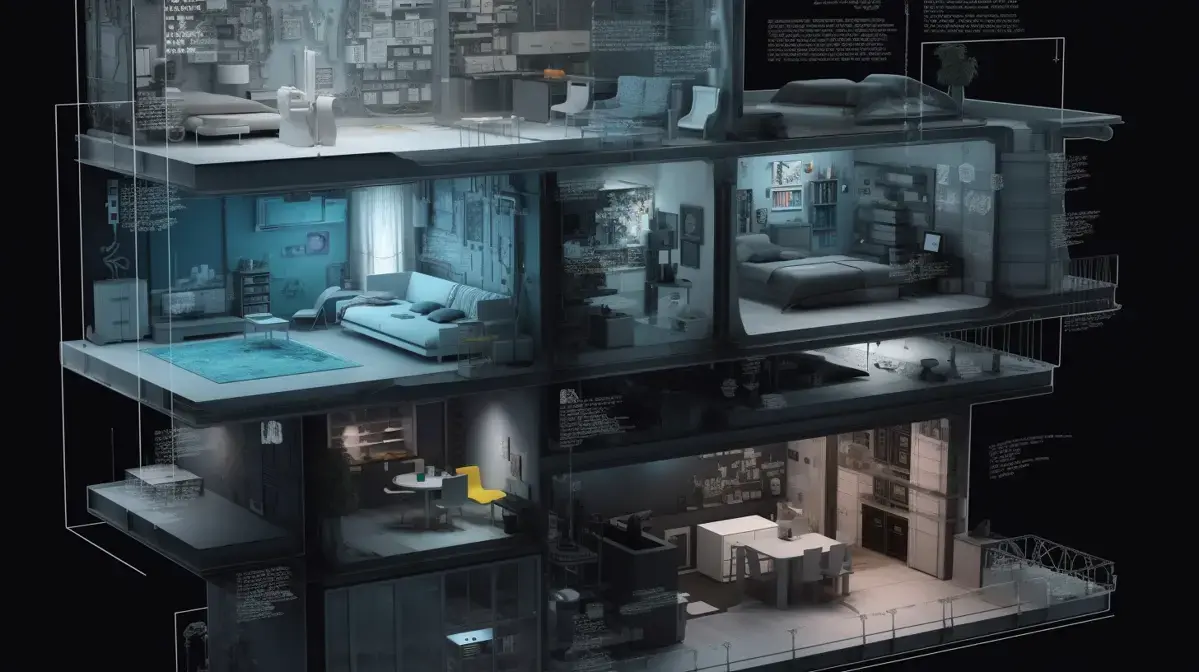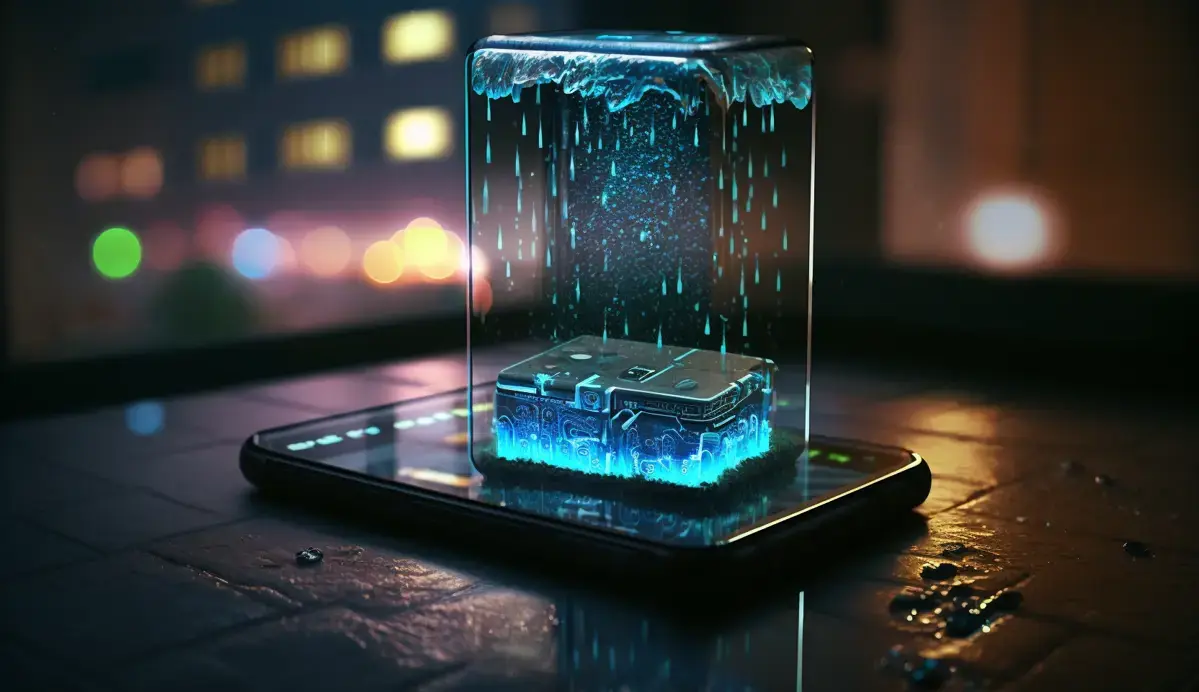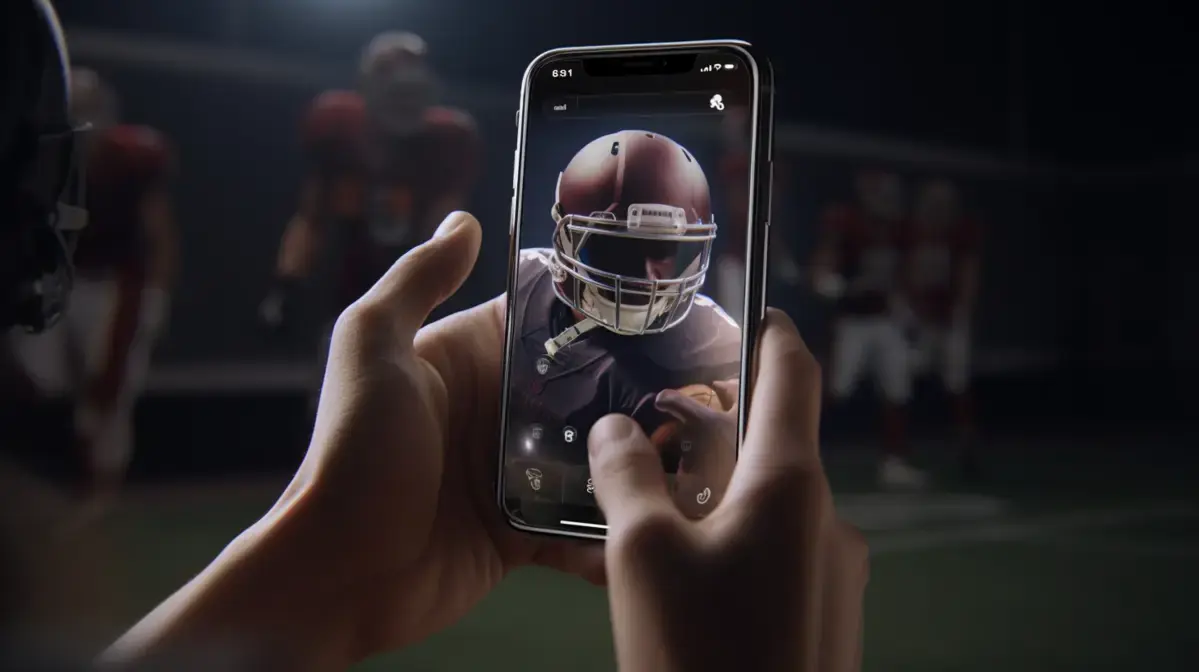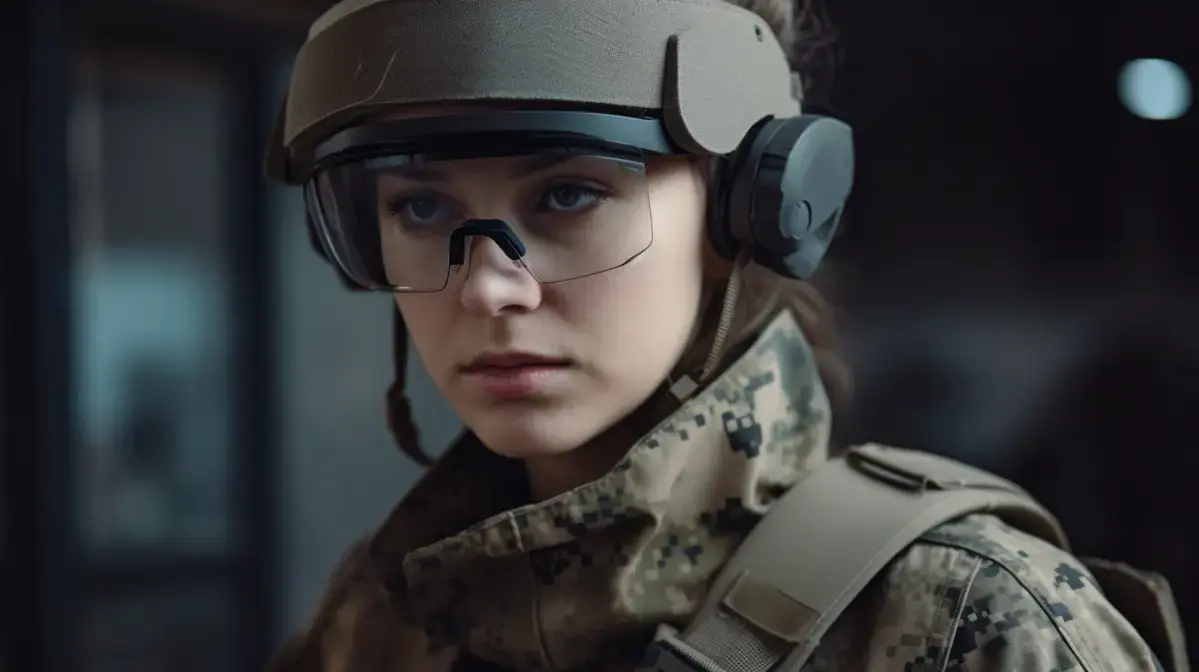Augmented Reality (AR) has emerged as a powerful tool for museum educators to deliver engaging and immersive educational experiences. By overlaying digital content onto real-world objects, AR enhances the visitors’ perception of their surroundings, making learning more interactive and memorable.
AR technology allows museum-goers to access information about exhibits in real-time using devices such as smartphones or tablets. Visitors can scan objects with their device’s camera, triggering audio-visual content that augments the object with additional information on its history, context or significance.
One of the most performant features of Augmented Reality is its ability to create dynamic and personalized experiences for each visitor based on their interests and preferences. Using machine learning algorithms integrated into AR software platforms like Argeopin link here, museums can offer customized tours that adapt to visitors’ feedback while they navigate through exhibits.
Another advantage of AR in Museum Education is its capacity to break down barriers between different types of learners by offering multiple approaches – visual, auditory or tactile -to accessing knowledge. This makes it easier for people with diverse abilities or backgrounds to engage actively with cultural heritage materials regardless of language barriers.
Overall, Augmented Reality offers exciting avenues for enhancing museum education programs by enabling more inclusive engagement methods that allow visitors deeper insights into cultural heritage materials than traditional formats could ever provide alone.
Table Of Contents
- Key Points
- Addressing Bias and Discrimination in Augmented Realities
- Looking to the Future: Trends and Developments in AR Ethics
- Introduction: Augmented Reality in Museum Education
- Interesting Facts
- Benefits of Incorporating Augmented Reality in Museums
- Case Studies Highlighting Successful Implementation of Augmented Reality in Museums
- Different Types of Augmented Reality Technologies Used for Museum Education
- FAQs
- Best Practices for Designing and Developing an Effective Augmented Reality Experience for Museums
- Challenges to Implementing Augmented Reality in Museum Education and How to Overcome Them
- Future Implications and Possibilities of Using Augmented Reality in Museum Education
- Key Takeaways

Key Points
- Augmented Reality (AR) is a technology that can enhance museum education experiences.
- AR allows visitors to interact with exhibits and artifacts in new ways, providing more engaging and immersive learning experiences.
- Museums can use AR to create virtual exhibits or supplement existing ones, making it easier for them to display fragile or rare items that cannot be displayed physically.
- The use of AR in museums has been shown to increase visitor engagement, improve retention of information learned during the visit, and attract younger audiences who may not otherwise be interested in traditional museum exhibitions.
Addressing Bias and Discrimination in Augmented Realities
Augmented Reality (AR) and Virtual Reality (VR) are two of the most exciting tech innovations in recent years. AR allows users to layer computer-generated images on top of the real world, while VR places users in a completely immersive digital environment. Both technologies have enormous potential for transforming our everyday lives, from gaming and entertainment to education and healthcare.
Today’s AR devices are much more sophisticated, with sleeker hardware that blends seamlessly into daily life. The expert describes how using one feels like having “a secret superpower,” allowing them to access information on-the-go without ever pulling out their phone or laptop.
Meanwhile, VR is rapidly advancing as well – top-end headsets now offer incredibly realistic experiences that can transport users anywhere from deep-sea diving expeditions to fantastical fantasy worlds straight out of their imaginations. And just like with any new technology there is always someone who will want try it first hand such as gamers who enjoy being absorbed into games similarily directors/ producers looking at using this for film production.
As these technologies continue evolving so do their applications; industries across sectors are beginning exploring ways where they could use these tools such as military simulations training or surgeons practicing virtual surgery before performing one live can demonstrate huge benefits leading ultimately enhanced outcomes. The future possibilities seem endless which makes experts excited about what’s around the corner next.
Looking to the Future: Trends and Developments in AR Ethics
Augmented Reality and Virtual Reality have come a long way since their inception. With advancements in technology, these innovative technologies are becoming more accessible to people from all walks of life. Augmented reality adds digital elements to the real world while virtual reality replaces the real world with a simulated one.
The possibilities for AR and VR applications are endless, ranging from gaming to education, healthcare, design and engineering just to name a few. One significant advantage of these technologies is that they offer an immersive experience that can be both educational and entertaining at once.
One interesting anecdote about AR was when it was first used as part of NASA’s space program where astronauts used it during training sessions on Earth before they went into space. The use allowed them practice procedures without being physically present in the shuttle or even having access to equipment if needed.
VR has also had notable success stories including its application in therapy sessions for people suffering from PTSD or anxiety disorders. The treatment involves recreating hazardous situations virtually until patients become desensitized towards them mentally allowing quicker recovery time than traditional talk therapies alone could achieve.
Augmented Reality (AR) & Virtual Reality (VR) will continue revolutionizing different industries across the globe because honestly there’s no stopping creativity.
Introduction: Augmented Reality in Museum Education
Augmented Reality (AR) is quickly becoming a popular tool for enhancing museum education and visitor engagement. By seamlessly blending the physical world with digital content, AR technology provides visitors with an immersive learning experience that enhances their understanding of exhibits and artifacts.
I have had the pleasure of witnessing firsthand how AR has transformed museum education. One memorable experience I had was at London’s Natural History Museum where they used interactive digital displays to bring extinct animals back to life in 3D. The display allowed visitors to interactively control dinosaurs’ movements using simple hand gestures as they roamed through a virtual prehistoric landscape – it was like stepping into Jurassic Park.
But it’s not just about bringing things to life; museums are also using AR for interpretation purposes – providing rich context behind exhibitions that would be impossible or impractical otherwise. For instance, when visiting Amsterdam’s Rijksmuseum recently, I saw how the museum integrated audio narration directly onto artwork labels via attendees’ handheld devices such as mobile phones or tablets so people could learn more about what inspired artists and techniques utilized while creating these masterpieces.
Moreover, if you’re looking for something even more experiential than visuals alone, then tactile soundscapes can truly transport you somewhere else entirely. In one particular exhibit, which dealt with ocean conservation efforts located at New York City’s American Museum Of Natural History, there were sensors placed throughout different exhibit zones, allowing augmented reality headsets-wearing participants to become fully immersed in captivating auditory environments ranging from stormy seas deep below surface level all the way up above on bustling docksides full of fishermen telling stories from times long gone by.
Augmented reality represents a powerful tool for making museum experiences both engaging educational alike thanks its ability integrate three senses sight touch hearing all same time thereby blurring lines between waking dream-like states.
Interesting Facts
- Augmented reality (AR) has been used in museums since the early 2000s, but it became more popular in recent years due to advancements in technology.
- The Smithsonian American Art Museum was one of the first museums to adopt AR technology for their exhibits back in 2009.
- In some museums, visitors can use AR apps on their smartphones or tablets to view additional information about a display as they walk through an exhibit.
- With AR, museum educators can create interactive and immersive experiences that allow visitors to engage with history and art like never before.
- The Cleveland Museum of Art’s “ArtLens” app provides augmented reality experiences that bring artwork alive with animations and soundscapes.

Benefits of Incorporating Augmented Reality in Museums
As an expert in Augmented Reality, the potential for this technology to be utilized within museum education is incredibly exciting. Imagine students being able to immerse themselves fully into a historical event or era without having to leave the walls of their classroom. Instead of simply reading about ancient Greece, they can become part of it by virtually exploring relics and artifacts through AR experiences.
One personal example that showcases the effectiveness of AR technology was my visit to The British Museum where I had access to interactive exhibits via a mobile device. With each exhibit showcasing detailed information juxtaposed with real-life imagery and animations, it felt like I was physically present during those significant moments in history as if time travel were possible.
By incorporating this innovative approach within museums education programs, students will have access not only educational resources but also interactive learning tools which enhance their engagement with historical content while ensuring an enriching experience at every stage.
In essence, introducing augmented reality within museum education augments traditional methods into something more dynamic and immersive resulting not just educating its beneficiaries but also encouraging curiosity towards history for its young learners. This is what makes incorporating augmented reality one small step towards more engaging modes of learning experience; paving ways on how we view teaching mediums now as we move forward toward greater strides envisioned for EdTech today.
Case Studies Highlighting Successful Implementation of Augmented Reality in Museums
Augmented Reality (AR) is a technology that promises to revolutionize how we learn and experience the world around us. In museum education, AR has become an increasingly popular tool for enhancing visitors’ experiences by providing them with interactive and immersive learning opportunities.
I have personally witnessed its transformative power on museum education. For example, while visiting the British Museum recently, I was able to use my smartphone to access additional information about various artifacts through AR-enabled exhibits. Not only did this make my visit more engaging and informative but it also made me feel like a participant in history rather than just a passive observer.
Moreover, museums are using AR as a means of attracting younger audiences who may not be interested in traditional exhibit formats. By creating exciting multimedia content accessible via mobile apps or headsets like Magic Leap or HoloLens 2; museums are now able to engage these digitally native audiences where they live: online.
The possibilities with augmented reality seem endless when it comes to museum education – from viewing ancient civilizations come alive before your eyes through mixed reality installations showcasing historic events; providing deeper context for artworks by overlaying virtual textures onto real-life pieces as seen at Toronto’s Aga Khan Museum’s “Listening To Here” exhibit – there is no end of ways that this technology can enrich our cultural experiences.
Different Types of Augmented Reality Technologies Used for Museum Education
Augmented Reality (AR) technology is revolutionizing the way people learn and experience museums. AR has unlocked new possibilities for museum education by combining digital content with real-life objects and interactive experiences.
The best thing about using augmented reality in museum education is that it enhances the overall visitor experience by making it more engaging, immersive and informative. By adding multimedia layers to traditional exhibits such as paintings or sculptures, visitors can explore them from different angles while learning more about their historical context or techniques used to create them.
One example he recalls was at The British Museum where they used an Augmented Reality app called “Living Legends”. This allowed users to scan QR codes on display cases which then triggered holographic guides who took you back through time on a virtual tour around ancient Greece telling stories along the way – all whilst standing right next to artefacts of significant moments throughout Greek history.
Augmented reality allows us not only imagine but visualise our past worlds by blending historic items with modern day technologies giving us stronger connections between ourselves today compared with our ancestors who lived hundreds even thousands of years ago.
FAQs
What is augmented reality?
Augmented reality (AR) is a technology that overlays digital information onto the physical world, creating an interactive and immersive experience for users.
How can augmented reality be used in museums?
AR can be used in museums to enhance education by providing visitors with additional information, interactive exhibits, and virtual tours of artifacts or exhibits not on display.
What are the benefits of using augmented reality for museum education?
The benefits include increased engagement from visitors who are able to interact with exhibits in new ways; improved accessibility as virtual tours allow people who cannot physically visit a museum to still participate; and enhanced learning experiences through more dynamic content such as 3D models or simulations.
Are there any downsides to using AR in museums?
Some potential downsides include cost barriers associated with implementing AR technology, security concerns regarding personal data collection during interactions with digital displays, and possible distractions for visitors if not implemented thoughtfully.

Best Practices for Designing and Developing an Effective Augmented Reality Experience for Museums
Augmented Reality (AR) has revolutionized the way people learn and experience museums. It allows visitors to immerse themselves in a world that blends reality with digital enhancements, creating an unforgettable educational experience. As an Augmented Reality expert from England, I have witnessed firsthand how AR technology has transformed museum education.
One of the remarkable things about AR is its ability to turn ordinary exhibits into interactive experiences. Visitors can explore historical artifacts by interacting with 3D models or watching videos overlayed onto them through their smartphones or tablets. For instance, visitors to The British Museum can use an app that provides additional information on selected artifacts when they scan QR codes next to them.
In addition, AR’s interactivity encourages engagement and deep learning among museum-goers of all ages by providing immersive environments where they can explore history in real-time at their own pace while being entertained simultaneously. Museums now understand how essential it is for learners’ retention rates based on active participation rather than passive observation alone – which means more opportunities not just for children but also adults seeking supplemental knowledge.
Augmented Reality usage in museums continues expanding globally as educators recognize its potential impact beyond traditional teaching methods; bringing new dimensions alive within each exhibit space via sensory-rich storytelling techniques making it accessible & engaging alongside exciting audiences about education again.
Challenges to Implementing Augmented Reality in Museum Education and How to Overcome Them
Augmented Reality (AR) has been making waves in the world of museum education, and for good reason.
One vivid memory that stands out was during a project at the British Museum where we used AR to bring ancient artifacts to life. One visitor exclaimed: “It’s like I’m standing right next to them.” The sense of wonder on their face was unforgettable – this technology had allowed them not just observe these objects from afar but interact with them on an incredibly personal level.
What makes AR so powerful is its ability to blend physical reality with digital content seamlessly – immersing visitors into new or existing exhibits by overlaying interactive images, videos or sounds onto real-world environments. This means that rather than passively observing exhibitions through glass cases or text-heavy plaques they can engage directly and directly manipulate what they see before them.
Overall Augmented Reality presents a unique opportunity for museums around the world, unlocking new potential for visitor engagement while providing educators more versatile mediums through which key topics can be explored creatively. By embracing this technology Museums will soon become places where imagination meets innovation- encouraging people who may have never considered visiting before – giving access unlike ever seen before.
Future Implications and Possibilities of Using Augmented Reality in Museum Education
Augmented reality has revolutionized the way we learn and experience museums. With its ability to blend digital information with real-world objects, museum-goers can now interact with exhibits in a whole new way.
One of my favorite examples comes from The Smithsonian National Museum of Natural History’s Skin and Bones exhibit. Using AR technology, visitors were able to point their smartphones at skeletal remains and see a fully fleshed-out version of what the creature would have looked like when alive. This not only made learning about these animals more engaging but also provided a unique opportunity for visitors to view them from different angles.
AR also allows for interactive experiences that aren’t possible without it – such as creating 3D models or virtual tours through historical landmarks and exhibitions that may no longer exist today. For example, The British Museum opened up its collection digitally so anyone could tour it using Google Street View – but they took things even further by creating an app called “A Gift For Athena” which allowed users to explore Athens’ Acropolis in 3D while standing inside one of their galleries.
AR is transforming museums into interactive educational spaces where people can engage with history like never before.(Keywords: Augmented Reality & Museum Education)
Conclusion
The use of augmented reality in museum education has revolutionized the traditional ways of learning. It allows students to explore and interact with exhibits in a more engaging and immersive manner, making it easier for them to understand complex concepts. Augmented reality technology offers endless possibilities for educators to create unique experiences that are tailored towards their students’ needs.
Furthermore, augmented reality in museums helps bridge the gap between formal education and informal learning by providing learners with an opportunity to engage beyond their classroom walls. This approach is especially beneficial for those who may struggle with traditional teaching methods or struggle from lack of exposure.
Overall, incorporating augmented reality into museum education provides a dynamic platform for interactive exploration while enhancing student’s creativity skills along with critical thinking abilities thus making it an excellent tool that should be embraced by all educational institutions globally.
Key Takeaways
-
- Augmented Reality has the potential to revolutionize museum education by providing interactive and immersive experiences for visitors.
- The technology can enhance traditional exhibits, offer personalized tours, and bring historical events to life.
- Museums that incorporate AR can attract younger audiences and increase engagement among all age groups.
- AR also offers opportunities for remote access to collections, expanding the reach of museums beyond their physical locations.
- Careful consideration should be taken when implementing AR into museum spaces in order ensure successful integration with existing exhibits without detracting from overall visitor experience.
- The cost of developing an Augmented Reality experience will vary depending on factors such as scope of project and level of interactivity desired; however there are several companies specializing in creating affordable solutions suited specifically towards educational institutions like museums.





